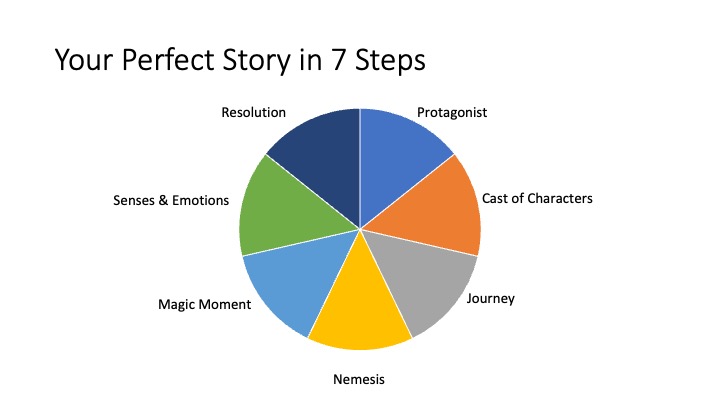- Home
- About Us
- The Team / Contact Us
- Books and Resources
- Privacy Policy
- Nonprofit Employer of Choice Award

 So here you are – the end is in sight!
So here you are – the end is in sight!
You’ve chosen your protagonist and sent her on a journey along with a cast of characters. Along the way she’s been opposed by her nemesis and has felt the emotion of the story’s magic moment.
Now it’s time to bring your story home to a satisfying ending for your audience.
In academic literature study, many if not most stories are structured as what Joseph Campbell calls The Hero’s Journey. In this classic story structure, the protagonist completes the journey, faces his nemesis, lives through his magic moment and returns home to his safe, familiar setting. He has returned to normal, but he has been forever changed by the experience.
Little Red Riding Hood makes it safely home to her mother after her deadly encounter with the big bad wolf. Her home is the same as when she left it, but she has changed. She is now wiser in the ways of the deep dark forest and has lost her innocence to the danger posed by the Big Bad Wolf.
By returning your protagonist safely home at the completion of your story you have resolved your story. Your story’s resolution leaves your audience feeling contented and satisfied after sharing the trials, tribulations and victories of her challenging journey. I like to think of the audience’s feeling at your story’s resolution like the feeling you have after a great Sunday dinner. You’ve enjoyed the experience and you are satisfied. You don’t want more.
Now, let me mess up our neat and tidy ending.
Because we’re fundraisers, we often tell stories to our donors and prospects in order to persuade them to give. In this case, you often want to leave your story unresolved. This is because you want to conclude your tale by inviting your audience to take action to create the story’s resolution.
At this point you invite your audience of donors and prospects to write the story’s resolution themselves. You tell your audience that a gift to the Humane Society will find the puppy her home and family – and that she’ll live happily ever after.
When your prospects give, they’ll feel the deep satisfaction of creating a happy ending to a journey full of loneliness and danger.
So, as you bring your story to a close, be sure to be thoughtful and intentional about the resolution you create. After all, it’s this resolution that will make your story complete and rewarding to all those who read it.
Fraser Green is a Principal at Good Works, one of Canada’s leading fundraising consulting agencies. At Good Works, Fraser’s focus is on legacy gift marketing strategy, donor research and, well, storytelling! Fraser is the co-author of “Iceberg Philanthropy” and “You Can’t Take It With You – The Art and Science of Legacy Fundraising” and the author of “3D Philanthropy.” fraser@goodworksco.ca